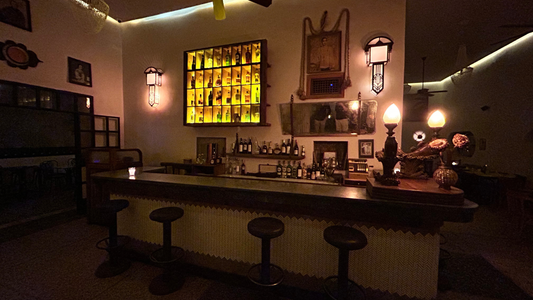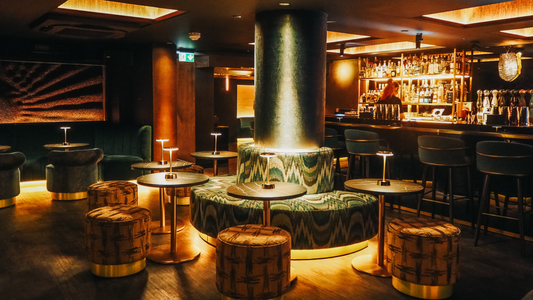Oban 14 — Between Mountain and Sea
By Rafi Mercer
Some whiskies feel like borderlands, sitting between worlds. Oban 14 is one of them. Distilled on the west coast of Scotland, in a small town where the Highlands meet the sea, it carries both mountain depth and maritime freshness. It is neither as smoky as Islay nor as sweet as Speyside, but something in between: a whisky of balance, rooted in place, shaped by its geography.
The Oban distillery was founded in 1794, long before the fishing village around it grew into a town. Today it sits pressed between the sea and the cliff face, one of Scotland’s smallest distilleries, still producing spirit in a space that feels more like a workshop than a factory. That intimacy shows in the whisky. Oban 14 has become the flagship, a dram that speaks directly of its setting: briny air, stone walls, heathered hills.
In the glass, it shows deep gold. On the nose, there’s citrus, honey, and dried fruit, layered with brine and a trace of smoke. On the palate, it begins sweet — orange, pear, malt — before smoke and salt push through, joined by spice and oak. The texture is full yet gentle, never heavy. The finish is long, drying, with echoes of sea spray and smoke lingering like mist. It is whisky that balances opposites: land and sea, sweetness and savour, Highland and coastal.
Oban 14’s place in the Tracks & Tales Guide to the Top 50 Whiskies is earned through its geography. Few whiskies taste so much of where they are made. It is not extreme in any one direction, but it holds character in every sip — a lesson in how balance can still carry force.
Its musical counterpart is David Bowie’s Low. Released in 1977, during Bowie’s Berlin period, the album is all about dualities: pop on one side, ambient instrumentals on the other; accessibility paired with experimentation. Like Oban 14, it lives in the in-between. Songs such as “Sound and Vision” carry brightness and melody, while side two drifts into atmospheres shaped by Brian Eno’s influence. The whisky, like the record, finds its power in contrast, in the tension between structure and openness.
In a listening bar, the pairing creates a mood of liminality. A glass of Oban 14 in hand, the opening chords of “Warszawa” rising slow and atmospheric. The whisky’s salt and smoke balance the music’s shadows, while its honeyed sweetness recalls the more melodic side of the album. Both whisky and record sit between worlds, and that is their strength.
Oban 14 may not carry the intensity of Islay or the grandeur of sherried Speyside, but it doesn’t need to. It speaks with quiet authority, proving that balance is not the absence of character but the presence of many in harmony. It is whisky for those who appreciate subtle shifts, for those who value the in-between as much as the extremes.
And perhaps the next step is to taste it in a place that honours those thresholds — a bar by the harbour at dusk, where sea air drifts in through the door and the turntable spins Bowie’s Berlin experiments into the night. Because Oban 14, like Low, reveals its resonance most fully in liminal spaces, where land meets water, and sound meets silence.
Rafi Mercer writes about the spaces where music matters. For more stories from Tracks & Tales, subscribe, or click here to read more.







